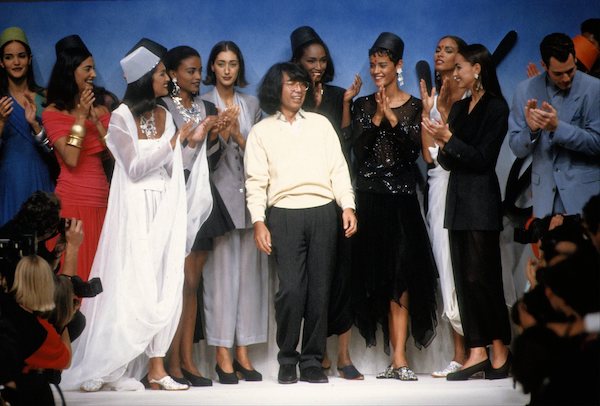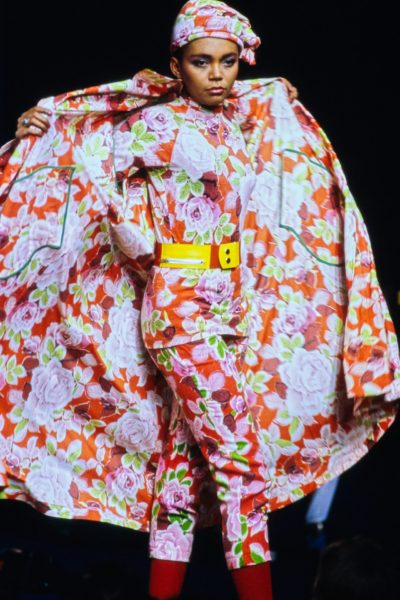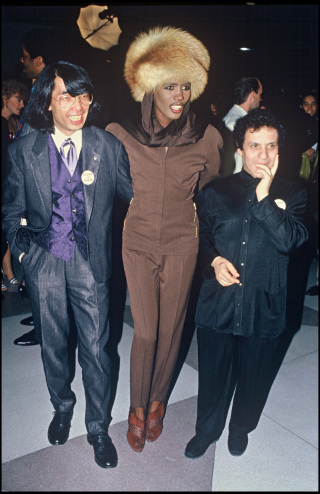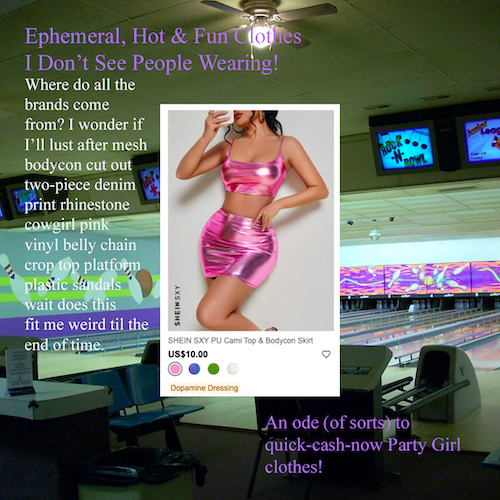
 Glamorous History: Kenzo Takada Was So Much Fun
Glamorous History: Kenzo Takada Was So Much Fun
Last week, Kenzo Takada — “the first Japanese designer to conquer Paris” — died at 81 from coronavirus. A thrower of big parties with elephants and fake weddings, a creator of fragrances for scentless flowers, a lover of exuberant prints, Kenzo was known for being both shy and fun. “Everything about him was big; he laughed big, he danced big, he ate big, he drank big,” ’70s supermodel Marie Helvin told British Vogue. “Kenzo was larger than life; he was the personification of joie de vivre.”
Below, some glamorous facts about the designer who invented the mass-market designer collaboration that’s ubiquitous today.
1. The Tokyo Olympics jumpstarted his career. In preparation for the 1964 Tokyo Olympics, Kenzo’s apartment block was torn down and he was given 10-months’ rent as compensation. Off to Paris he went, where he procured a room for nine francs a day and began selling designs to French designer Louis Féraud. “When I left Japan in 1964, I thought my stay in France would be for six months. I am happy that this stay is still not finished, 50 years on,” he told FranceInfo in 2016.
2. Born near Osaka in February 1939, he came from a family of hoteliers. Kenzo became interested in fashion after reading his sisters’ magazines and observing their sewing lessons.
3. He was one of the first male students at Tokyo’s Bunka fashion college.

4. He opened his first store in 1970. Kenzo’s first boutique was named after his label Jungle Jap which was meant to “underscore the heritage of a designer who’d been told he would never make it to Paris.” In 1972, protesters showed up outside Macy’s in New York where he was supposed to hold his first major fashion show, and the name was changed to Kenzo.
The walls of his small boutique were painted with a reproduction of Henri Rousseau’s 1910 painting The Dream. “Out [the models] surged, like brilliant sunflowers, everyone loved this new, youthful fashion,” wrote Chihiro Masui about Kenzo’s second fall/winter show.
5. 3,000 people instead of the expected 800 guests arrived at his 1972 Gare d’Orsay show. He became fashion’s hot ticket of the ’70s. Editor and former model Carine Roitfeld said, “The 70s in Paris were an incredible time, thanks to Kenzo. He would rent out castles, and there was always dancing, theme rooms, palm readers. Everyone was there.”
6. For his move from Japan to Paris, he booked a second-class trip aboard a boat that stopped in Hong Kong, Vietnam, Singapore, Sri Lanka, Djibouti, and Egypt, and his designs were inspired by the sights of these cities. Kimono-inspired pieces met wild floral and animal prints.
“When I opened my shop, I thought there was no point in me doing what French designers were doing, because I couldn’t do that,” Mr. Takada told The South China Morning Post in 2019. “So I did things my own way in order to be different, and I used kimono fabrics and other influences.”

7. He loved flowers! In 1988, he debuted his Flowers by Kenzo fragrance by inventing a smell for the scentless poppy. Perfume blogger Victoria Frolova described it as a study in contrasts. She wrote: “There is an interplay between the vintage references and the abstract modernity. It skirts the line between power and delicacy. Even Flower’s innocent softness has Morillas’s characteristic, sensual, addictive quality…”
“All the flower shops are full of beautiful flowers,” he wrote to his mom in April 1965. “There are lots of flowers I’ve never seen in Tokyo, like anemones, mimosas, and others whose names I don’t know. When I walk past a flower shop I feel very cheerful.”
8. His shows were parties. From a Studio 54 soiree with Grace Jones to runway rollerskaters to a fake wedding, his shows were performance pieces. His 1978 and 1979 shows were staged in a circus tent and featured Kenzo riding in on an elephant and performers riding horses in see-through costumes. A former Barney’s executive described him as a “cult figure for the young and young-hearted.”
9. He invented the mass-market designer collaboration. In 1984, he made a deal with The Limited to design an affordable collection, which led to some luxury retailers dropping Kenzo. He paved the way for the now-common high/low-end collaboration model, and Kenzo (then run by Carol Lim and Humberto Leon) continued the tradition with an H&M collection in 2016.
“[Kenzo] wasn’t fast fashion prices, which are, you know, artificially deflated, but they were reasonably priced clothes for good fashion,” style writer Dana Thomas told NPR. “And when you wore it, you always got compliments.”

10. Last year, his 80th birthday party continued until 4am. There were fake cherry trees and real butterflies and two nearly naked male dancers springing out of a huge gift box. “I have so many memories with Kenzo — traveling round the world, going to Mount Fuji, dancing in the rain, showing off wherever we went,” model Pat Cleveland told WWD. “But also the big celebration shows that he would do: he was the first designer to ever do fashion shows that were actual entertainment. And that was back in the Seventies!”
11. He retired from fashion in 1999, selling his company to luxury conglomerate LVMH for $80 million. “It was a terrific party,” Kenzo wrote of his last show, where he descended from the ceiling onto a giant globe. He retired to pursue painting, but he continued designing costumes for opera productions like Tokyo Nikikai Opera’s production of “Madame Butterfly”.
“As a costume designer, I tried to grasp Puccini’s narratives while drawing Japanese spirituality as accurately as possible,” he told The Japan Times. “It should make the audience dream and travel in ecstasy.”
Categorised in: Features, Glamour


